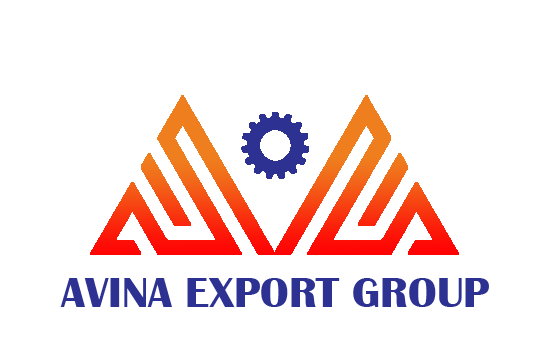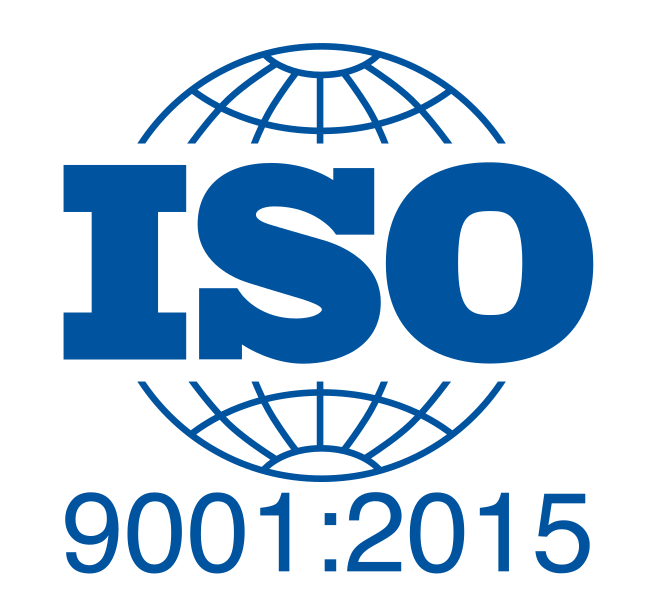Description
- What is a steel billet?
- What are the technologies used in steel billet production?
- What are the advantages of steel billets?
- What is the supply capacity of Avina Export Group?
- What are the standards for steel billets?
- What do you know about Iranian steel billets?
- To which countries is Iranian steel billet exported?
- What are the advantages of Iranian steel billets compared to their competitors?
________________________________________________________________
- What is a steel billet?
Steel billet is a semi-finished product in the steel industry, typically a square or rectangular cross-section of steel that is hot rolled or forged. It is produced through a process of casting molten steel, then allowing it to solidify into a rectangular shape. Billets serve as raw material for further processing into finished steel products such as bars, rods, and structural shapes.
Key characteristics of steel billets include:
- Shape and Size: Billets are generally square or rectangular in cross-section with dimensions typically ranging from 100×100 mm to 200×200 mm or larger, depending on the intended use and manufacturing process.
- Composition: They are made primarily from carbon steel, though alloy steels and stainless steels can also be cast into billets depending on the desired end product.
- Production: Billets are often produced through continuous casting, where molten steel is poured into a water-cooled mold, solidifying into the desired shape. They can also be produced through ingot casting followed by hot rolling or forging.
- Uses: Billets serve as feedstock for further processing in rolling mills or forging operations to produce final products such as bars, rods, wires, structural sections, and seamless tubes.
- Quality Control: The quality of billets is crucial as it directly affects the quality of the final steel product. Quality control measures include ensuring uniform composition, absence of defects, and precise dimensions.
In summary, steel billets are intermediate products in the steel manufacturing process, essential for producing a wide range of finished steel products used in construction, manufacturing, infrastructure, and various industrial applications.
- What are the technologies used in steel billet production?
Steel billet production involves several technologies and processes to transform raw materials into semi-finished products that can be further processed into final steel products. Here are the primary technologies and processes used in steel billet production:
- Electric Arc Furnace (EAF)
- Process: Scrap steel or direct reduced iron (DRI) is melted in an electric arc furnace. The furnace uses electric arcs from electrodes to generate the heat required to melt the raw materials.
- Advantages: EAF is flexible in terms of raw materials and energy efficiency. It is suitable for recycling scrap steel.
- Basic Oxygen Furnace (BOF)
- Process: In the BOF process, molten iron from a blast furnace is mixed with scrap steel. Oxygen is blown into the mixture at high speeds, reducing carbon content and converting it into steel.
- Advantages: BOF is efficient for large-scale production and can produce steel with low impurity levels.
- Induction Furnace
- Process: An induction furnace uses electromagnetic induction to heat and melt steel scrap or direct reduced iron.
- Advantages: It provides precise temperature control and is suitable for smaller-scale production.
- What are the advantages of steel billets?
Steel billets are semi-finished products that are cast into square or rectangular shapes and are used as raw materials for producing various steel products. They are a crucial component in the steel manufacturing process and offer several advantages. Here are some of the key benefits of using steel billets:
- Uniform Composition and Quality
- Consistency: Steel billets have a uniform chemical composition and are produced to specific standards, ensuring consistent quality across batches.
- Purity: The production process removes impurities, resulting in a more refined product that meets strict industry specifications.
- Versatility
- Wide Range of Applications: Steel billets can be used to manufacture a variety of products, including bars, rods, wires, and structural steel, making them a versatile choice for different industries.
- Customization: They can be further processed into different shapes and sizes to meet specific application requirements.
- Cost-Effectiveness
- Efficient Production: Billets are produced in large quantities using cost-effective methods, which helps lower the overall cost of steel production.
- Reduced Waste: The manufacturing process of billets is optimized to minimize waste, making it an economical choice.
- Ease of Handling and Transportation
- Standardized Shapes: The standardized shape and size of billets make them easier to handle and transport compared to raw materials or finished products.
- Stackability: Their uniform shape allows for efficient stacking and storage, saving space and reducing logistics costs.
- Excellent Mechanical Properties
- Strength and Durability: Steel billets possess high strength and durability, making them suitable for demanding applications such as construction and infrastructure projects.
- Ductility and Malleability: They can be easily deformed under stress without breaking, allowing for further processing and shaping.
- Adaptability to Different Production Processes
- Hot Rolling and Cold Rolling: Billets can be processed through both hot and cold rolling to produce various finished products, offering flexibility in manufacturing techniques.
- Forging and Extrusion: They can be used in forging and extrusion processes to create components with complex shapes.
- Enhanced Surface Finish
- Smooth Surfaces: The production process of billets results in a smooth surface finish, which can be beneficial for applications requiring minimal machining.
- Reduced Defects: A high-quality surface finish helps reduce defects in the final product, improving overall product performance.
- Energy Efficiency
- Lower Energy Consumption: The production of steel billets is designed to be energy-efficient, reducing the carbon footprint of the manufacturing process.
- Recyclability: Steel billets can be recycled and reused, contributing to sustainable practices in the steel industry.
- Improved Inventory Management
- Standard Sizes: The availability of standard sizes simplifies inventory management and planning for manufacturers.
- Predictable Supply Chain: Consistent quality and dimensions ensure a predictable supply chain, reducing the risk of production delays.
Conclusion
Steel billets are an essential component in the steel manufacturing industry, providing a reliable, versatile, and cost-effective solution for producing a wide range of steel products. Their uniform quality, adaptability, and excellent mechanical properties make them a preferred choice for manufacturers across various industries. Whether for construction, automotive, or machinery applications, steel billets offer significant advantages that contribute to the efficiency and effectiveness of the production process.
- What is the supply capacity of Avina Export Group?
In Iran, there are more than 70 steel billet production factories, concentrated in the three provinces of Isfahan, Hormozgan, and Khuzestan in terms of geographic distribution. These three provinces account for the largest share of steel billet production in the country. In 2023, Iran’s steel production reached more than 32 million tons, the highest amount in the country’s steel history. Fortunately, the geographical distribution of these producers in Iran allows the desired billet to be supplied from the nearest border point according to the export customer’s destination, which reduces transportation costs for the customer. Avina Export Group has strong relationships with steel billet producers in the four corners and the center of Iran and is therefore able to supply high tonnages at competitive prices with on-time delivery to our valued customers. We supply a variety of steel billets produced by induction furnaces (IF), electric arc furnaces (EAF), and blast furnace (BF) technology, meeting customers’ requirements. Additionally, customized products in large quantities are available upon customers’ requests.
- What are the standards for steel billets?
Steel billets are produced to meet various industry standards to ensure quality, consistency, and suitability for specific applications. These standards specify the chemical composition, mechanical properties, dimensions, and tolerances of the billets. Here are some of the main steel billet standards from different organizations around the world:
International Standards
- ISO Standards (International Organization for Standardization)
- ISO 6930: High Yield Strength Flat Steel Products for Cold Forming
- ISO 630: Structural Steels
- ISO 4951: High Strength Steel for Structural Purposes
European Standards
- EN Standards (European Norms)
- EN 10025: Hot Rolled Products of Structural Steels
Specifies requirements for flat and long products of hot rolled steels.
-
- EN 10060: Hot Rolled Round Steel Bars for General Purposes
- EN 10250: Open Steel Die Forgings for General Engineering Purposes
American Standards
- ASTM Standards (American Society for Testing and Materials)
- ASTM A615: Standard Specification for Deformed and Plain Carbon-Steel Bars for Concrete Reinforcement
- ASTM A706: Standard Specification for Low-Alloy Steel Deformed and Plain Bars for Concrete Reinforcement
- ASTM A36: Standard Specification for Carbon Structural Steel
Iranian standards
- INSO Standards (Iranian National Standardization Organization)
- INSO 20300: Billet steel produced by continuous casting method, used in Structural steels, characteristics and test methods.
Japanese Standards
- JIS Standards (Japanese Industrial Standards)
-
- JIS G3101: Rolled Steels for General Structure
- JIS G3106: Rolled Steels for Welded Structure
- JIS G4051: Carbon Steels for Machine Structural Use
Chinese Standards
- GB Standards (Guobiao Standards)
-
- GB/T 700: Carbon Structural Steels
- GB/T 1591: High-Strength Low-Alloy Structural Steels
- GB/T 699: Quality Carbon Structural Steel
Indian Standards
- IS Standards (Indian Standards)
- IS 2830: Carbon Steel Cast Billet Ingots, Billets, Blooms, and Slabs for Re-Rolling into Steel for General Structural Purposes
- IS 2062: Hot Rolled Medium and High Tensile Structural Steel
Russian Standards
- GOST Standards (State Standards for the Russian Federation)
-
- GOST 380: Carbon Steel for General Purpose
- GOST 1050: Structural Carbon Quality Steel
- GOST 19281: Low-Alloyed Steels for Structures
Key Parameters Defined in Standards
- Chemical Composition
- Specifies the percentage of carbon, manganese, silicon, sulfur, phosphorus, and other alloying elements.
- Mechanical Properties
- Tensile strength, yield strength, elongation, and impact resistance are often defined.
- Dimensional Tolerances
- Specifies the permissible variations in dimensions and shapes, ensuring uniformity and compatibility.
- Surface Quality
- Requirements for surface finish and acceptable levels of surface defects.
- Testing and Certification
- Describes the methods for testing and certification processes to verify compliance with standards.
Importance of Standards
- Quality Assurance: Ensures that the billets meet specific criteria for quality and performance.
- Interchangeability: Facilitates the use of billets across different regions and industries.
- Safety: Guarantees that the billets can withstand specific stresses and conditions in their applications.
- Efficiency: Streamlines production and reduces waste by providing clear guidelines for manufacturers.
By adhering to these standards, manufacturers can produce steel billets that meet the specific needs of various industries, ensuring compatibility, reliability, and safety.
- What do you know about Iranian steel billets?
Iranian steel billets are an important part of Iran’s steel industry and are widely used in various applications. Here are some key points about Iranian steel billets:
Production and Export
- Production Capacity: Iran is one of the largest steel producers in the Middle East, with a significant production capacity for steel billets. The country has been investing in its steel industry to increase production and improve quality.
- Export Markets: Iranian steel billets are exported to several countries, including those in the Middle East, Asia, and Europe. The country has been expanding its export markets despite facing international sanctions and trade restrictions.
- Quality Standards: Iranian steel billets are produced following international quality standards. The billets are typically made using electric arc furnaces (EAF) or basic oxygen furnaces (BOF) and are known for their quality and competitive pricing.
Applications
- Construction Industry: Steel billets are primarily used in the construction industry for making reinforcing bars (rebar), structural steel, and other construction materials.
- Manufacturing: They are also used in manufacturing various steel products, such as wire rods, pipes, and tubes.
- Automotive and Machinery: The automotive and machinery industries use steel billets for making parts and components.
Recent Developments
- Investment in Technology: Iran is investing in modernizing its steel production facilities to improve efficiency and reduce environmental impact.
- Expansion of Production: The country aims to increase its steel production capacity, with several new projects and expansions in the pipeline.
- Focus on Self-Sufficiency: Iran is working towards self-sufficiency in steel production, reducing reliance on imports for raw materials and finished products.
Iran’s steel billet industry plays a crucial role in the country’s economy, and ongoing developments aim to strengthen its position in the global market.
7.To which countries is Iranian steel billet exported?
Iranian steel billets are exported to several countries, leveraging the country’s strong production capacity and competitive pricing. Key export destinations for Iranian steel billets include:
- Turkey: A major importer of Iranian steel billets for its robust manufacturing and construction sectors.
- United Arab Emirates (UAE): Receives Iranian billets for use in various industries, including construction and manufacturing.
- China: Imports Iranian steel billets for use in its extensive steel industry and other manufacturing processes.
- India: A significant market for Iranian steel billets, which are used in various construction and industrial applications.
- South Korea: Imports Iranian billets for use in its steel production and other industrial processes.
- Vietnam: Purchases Iranian steel billets for use in its growing construction and manufacturing sectors.
- Pakistan: Another key market for Iranian steel billets, utilized in construction and industrial applications.
These exports are driven by the quality and competitiveness of Iranian steel billets, as well as the strategic location of Iran, which provides logistical advantages for shipping to neighboring and regional markets.
- What are the advantages of Iranian steel billets compared to their competitors?
Iranian steel billets have several advantages compared to their competitors in the global market. Here are some of the key advantages:
1. Competitive Pricing
- Lower Production Costs: Iran benefits from relatively low energy costs due to its abundant natural gas resources, which can lead to lower production costs for steel billets. This allows Iranian producers to offer competitive prices in the global market.
- Labor Costs: Labor costs in Iran are generally lower compared to many other steel-producing countries, further reducing the overall cost of production.
2. Abundant Raw Materials
- Iron Ore Reserves: Iran has significant iron ore reserves, which provide a steady supply of raw materials for steel production. This self-sufficiency in raw materials reduces dependency on imports and stabilizes production costs.
- Proximity to Raw Materials: The close proximity of steel production facilities to iron ore mines and natural gas resources reduces transportation costs and logistics complexities.
3. Geographic Location
- Strategic Position: Iran’s location at the crossroads of Asia, Europe, and Africa provides easy access to key export markets. This strategic position allows for shorter shipping times and reduced transportation costs to major steel-consuming regions.
- Access to Emerging Markets: Iran has established trade relationships with neighboring countries and emerging markets, which can be advantageous for exporting steel billets.
4. Quality Standards
- Adherence to International Standards: Iranian steel billets are produced following international quality standards, ensuring consistency and reliability in the products. This focus on quality helps Iranian billets compete effectively in global markets.
- Technological Advancements: Iran has been investing in modernizing its steel production facilities, incorporating advanced technologies to improve product quality and production efficiency.
5. Government Support
- Investment in Infrastructure: The Iranian government has been supportive of the steel industry, investing in infrastructure and technology to enhance production capabilities and competitiveness.
- Incentives and Policies: Policies aimed at boosting exports and supporting domestic industries can provide additional advantages for Iranian steel producers.
6. Diverse Product Range
- Versatility: Iranian steel producers offer a wide range of steel billet sizes and grades, catering to various industries and applications. This versatility allows them to meet diverse customer needs and preferences.
- Customization: The ability to produce customized steel billets to meet specific customer requirements can be an attractive feature for international buyers.
7. Strong Domestic Demand
- Robust Construction Industry: Iran’s growing construction industry ensures a strong domestic demand for steel billets, providing stability and consistent production levels.
- Industrial Growth: The expansion of various industrial sectors within Iran further bolsters domestic demand for steel products.















